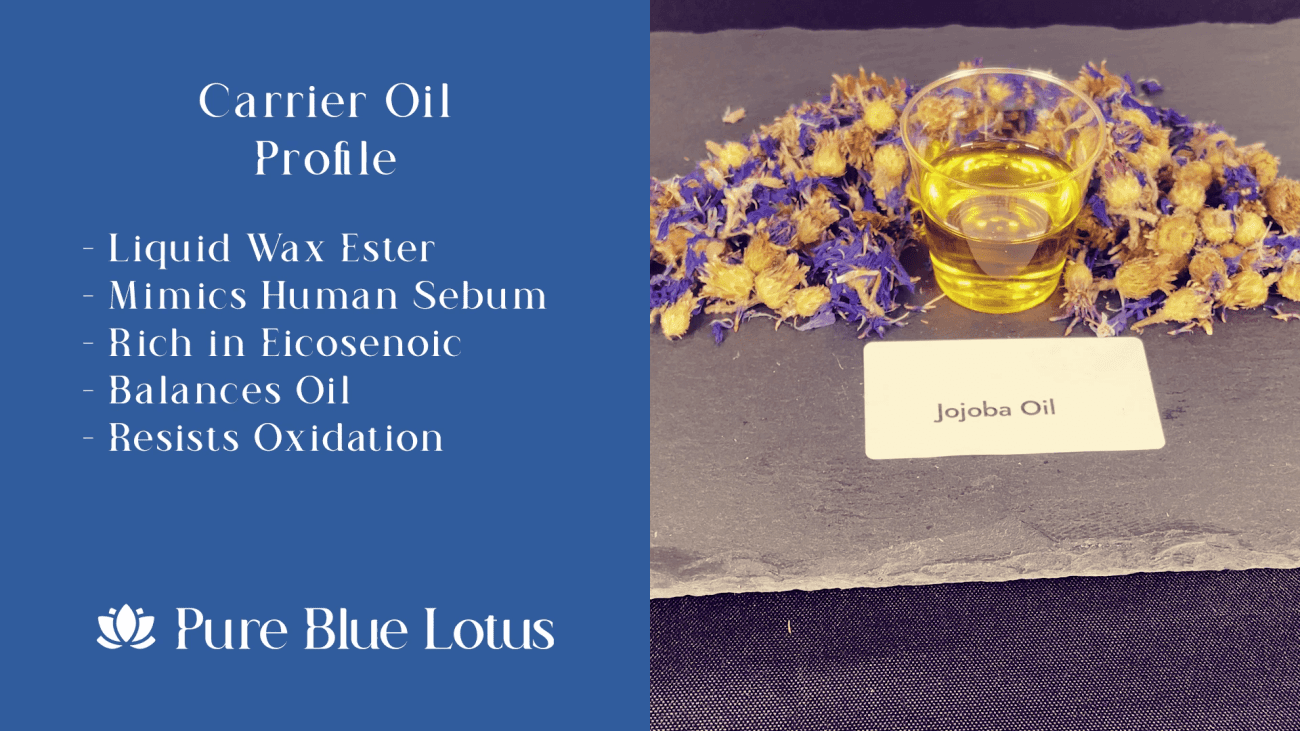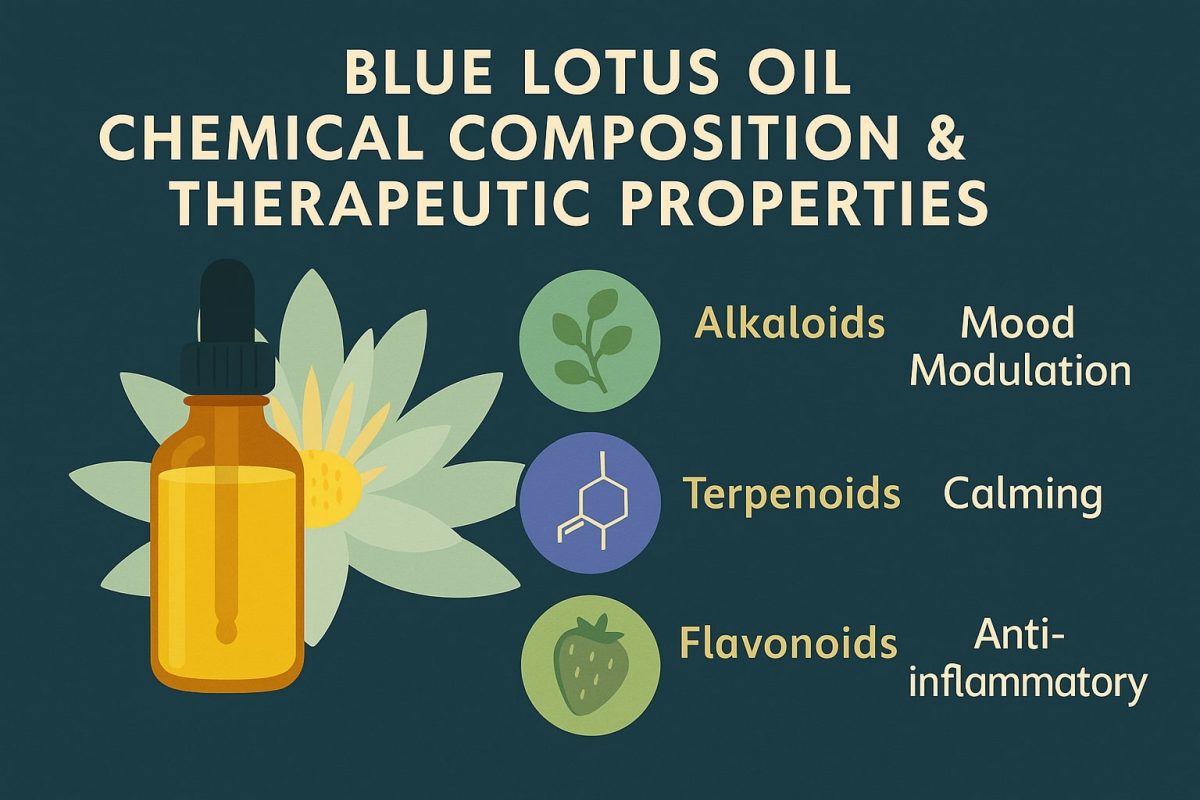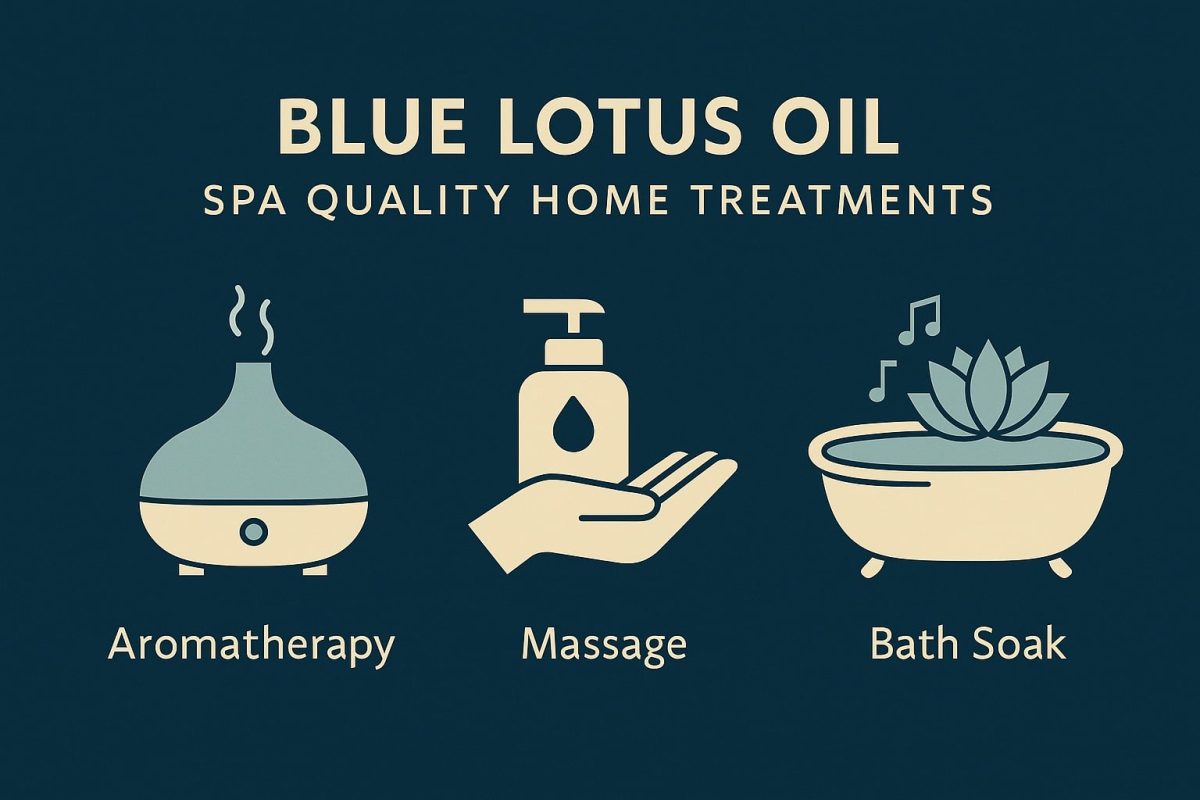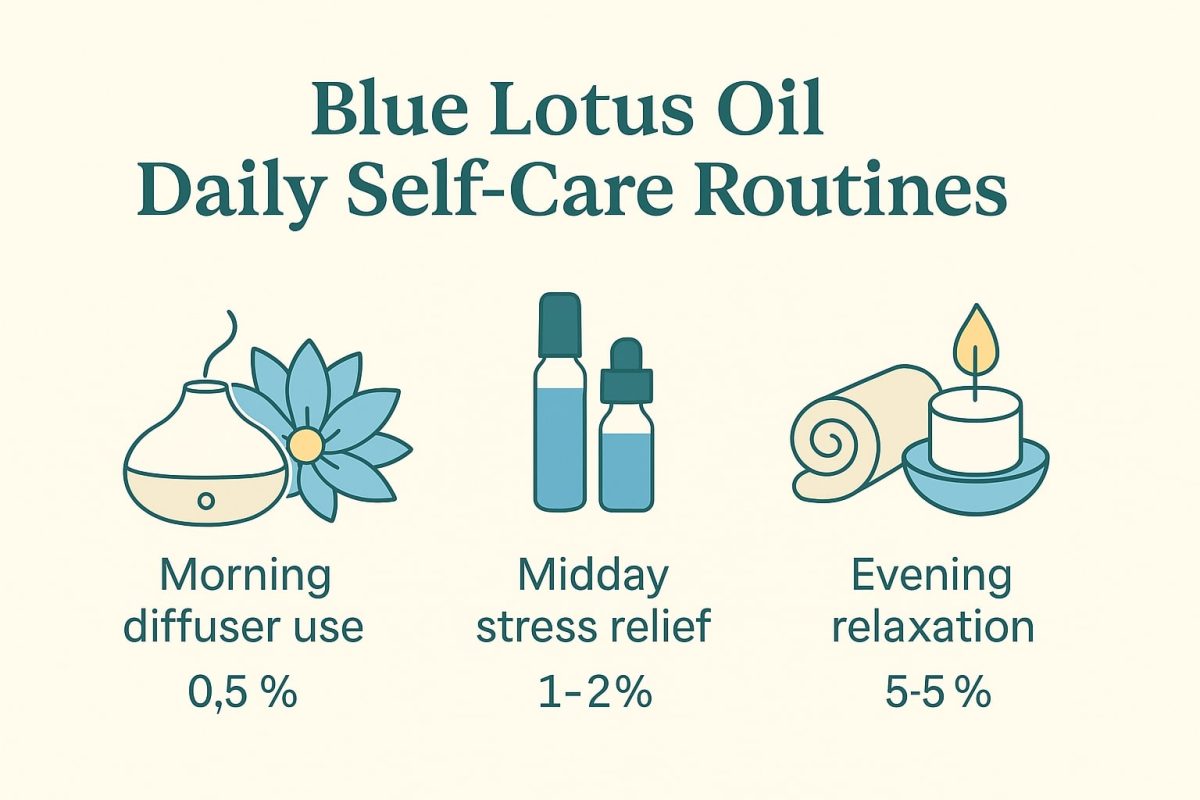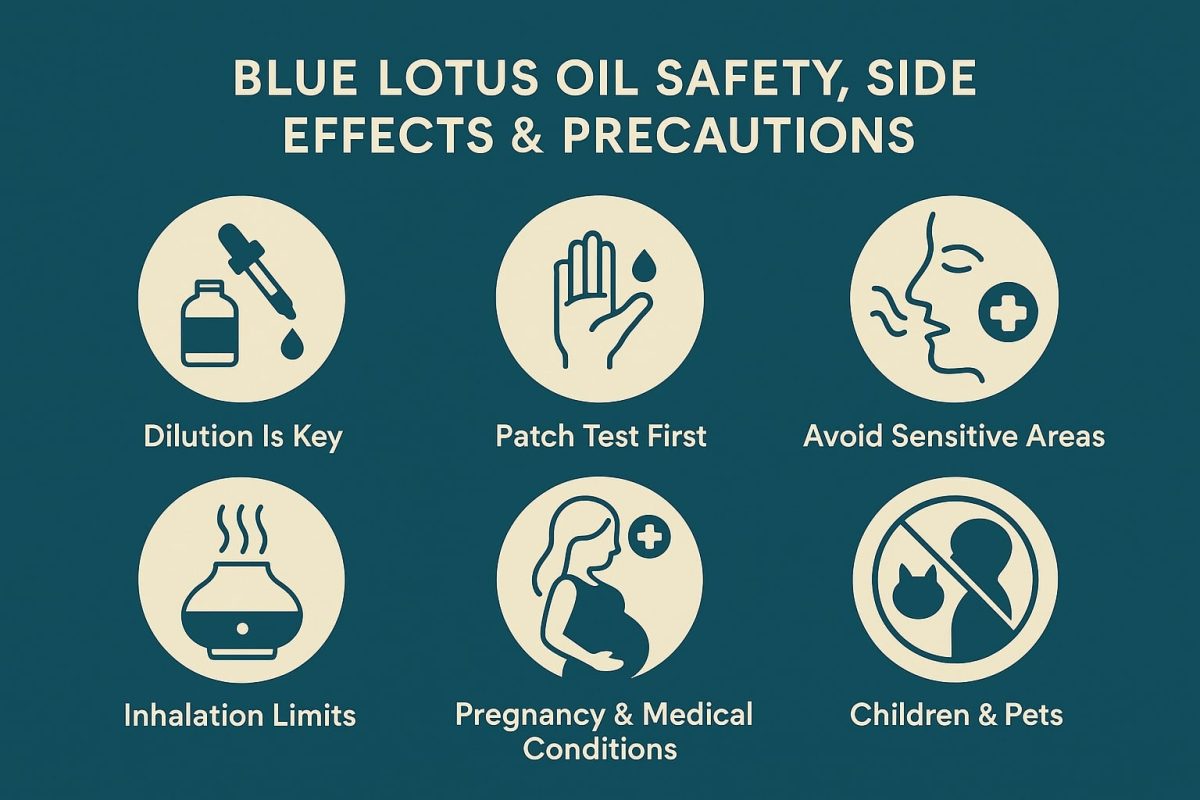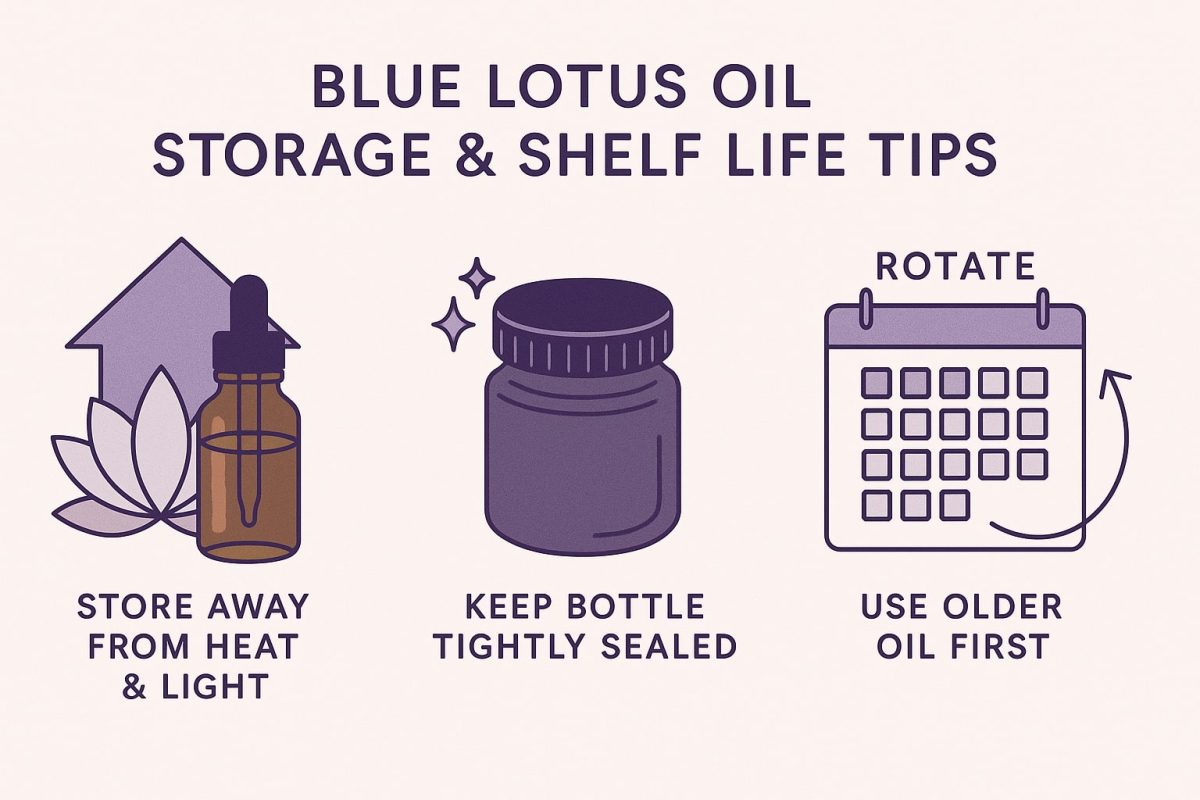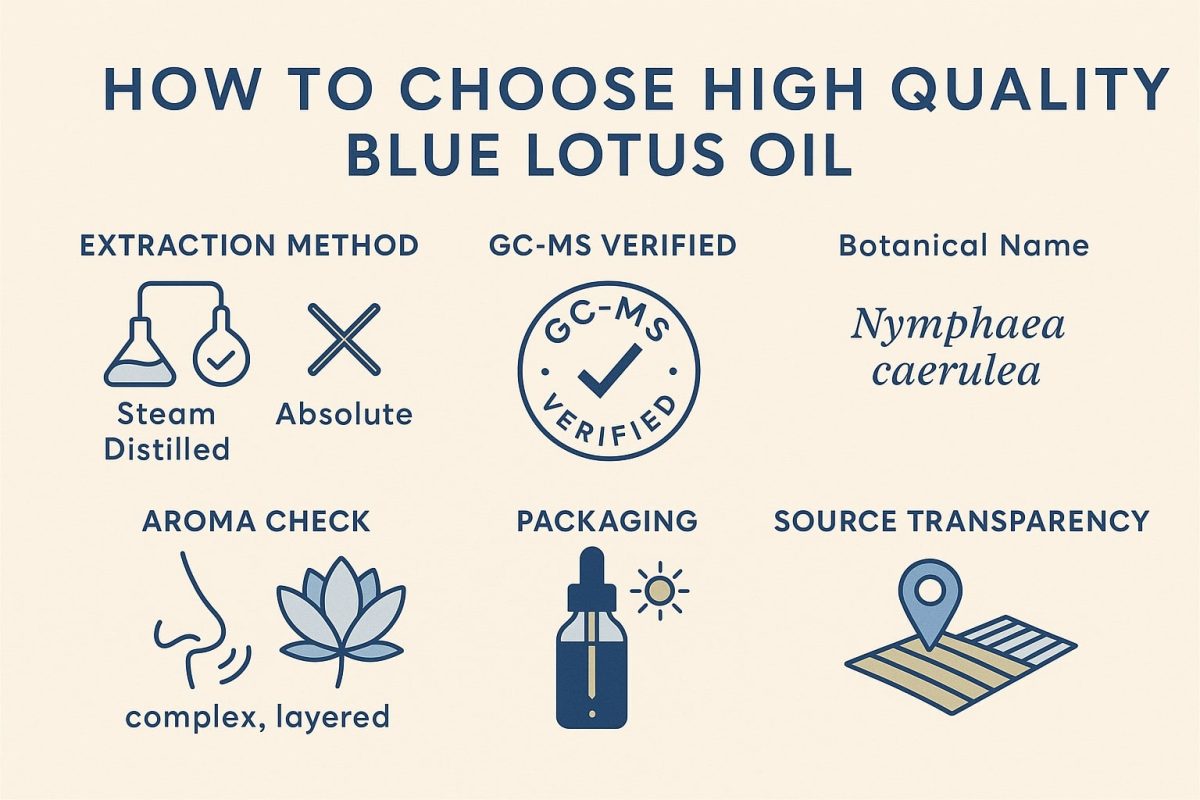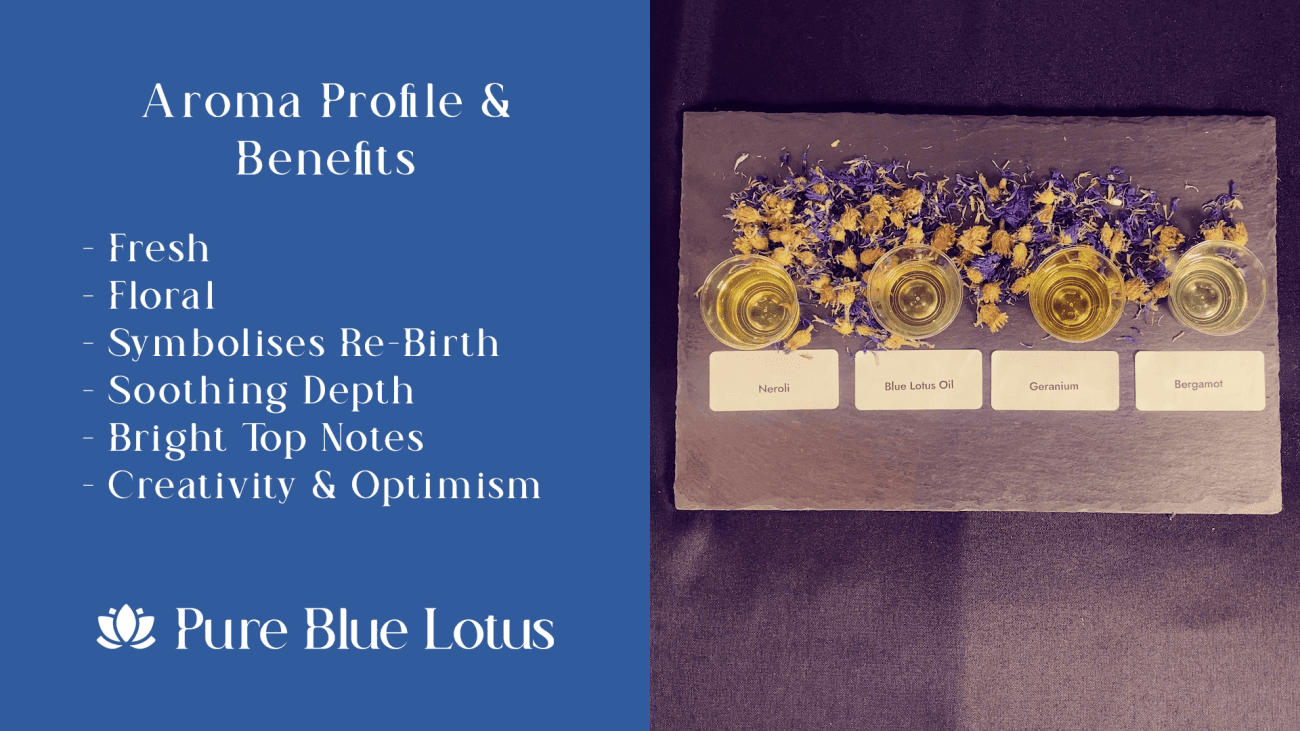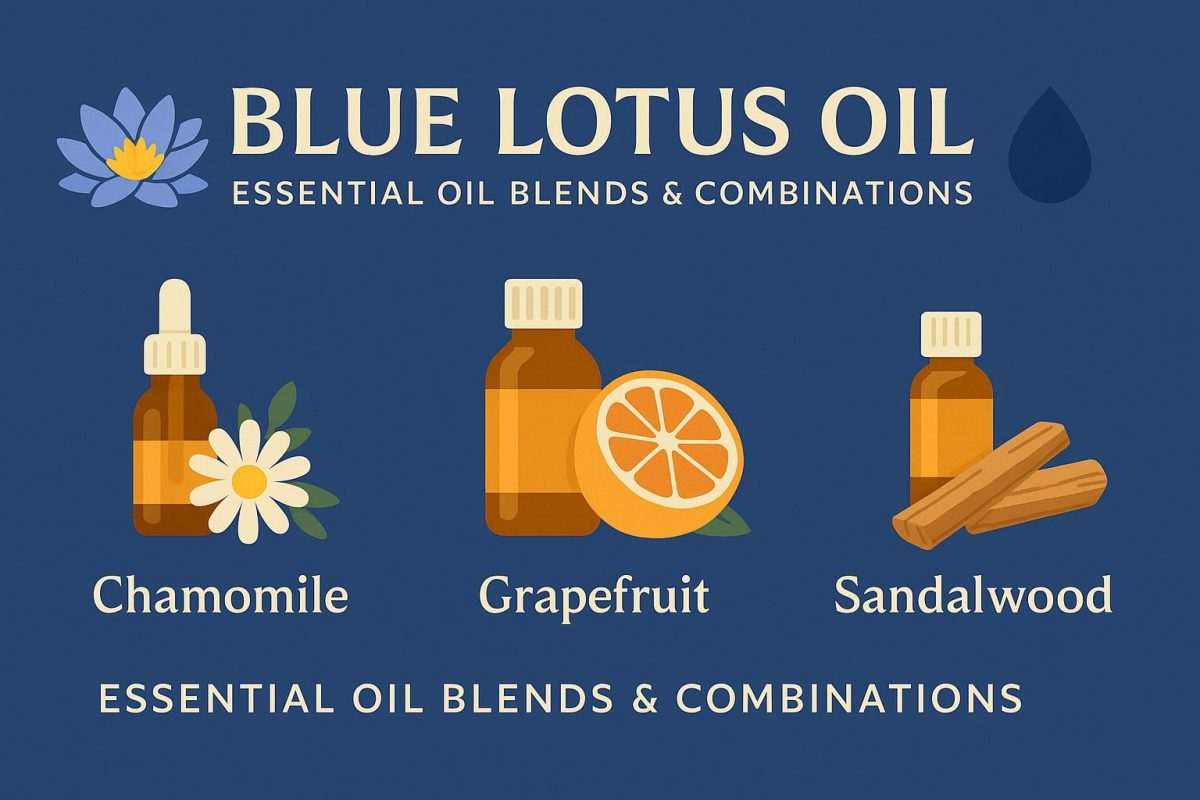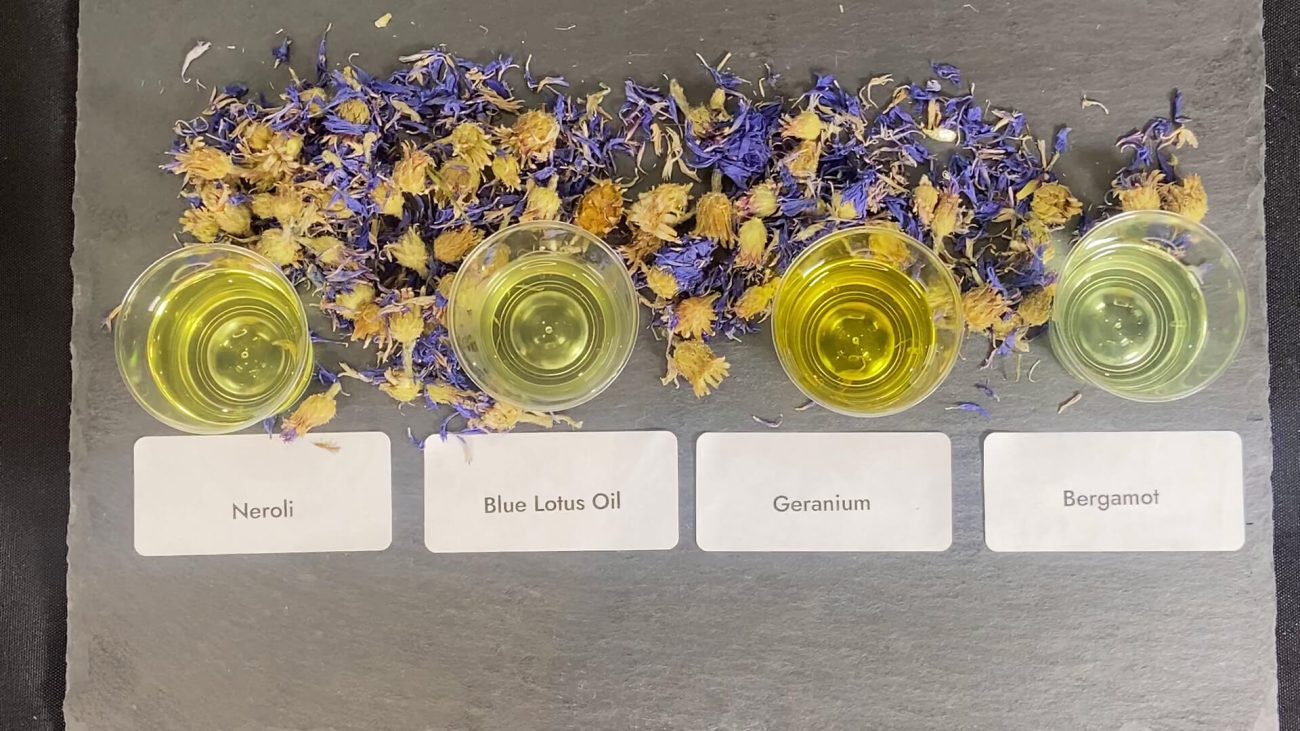Does Walmart Carry Blue Lotus Essential Oil
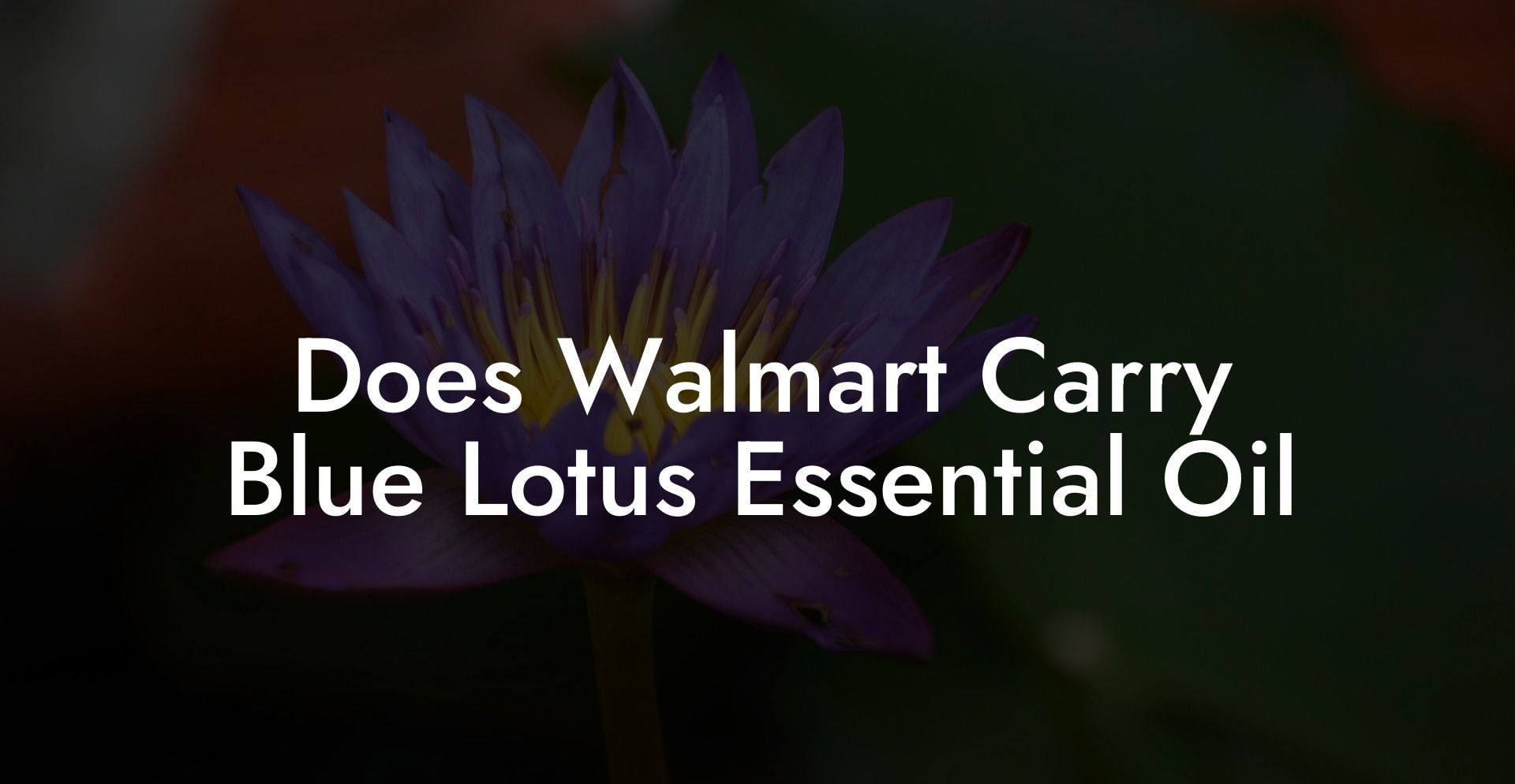
If you’re hoping to pick up a bottle of blue lotus essential oil at Walmart, you may be disappointed to learn that as of today Walmart does not stock this specialty oil either on its shelves or on its online store. Blue lotus essential oil remains relatively rare due to the complexity of sourcing and extraction. In this guide we’ll explain why Walmart does not carry blue lotus oil, explore alternative ways to obtain it, examine its history benefits and uses, review quality considerations, pricing and safety guidelines, and answer common questions so you can get the authentic product you’re seeking.
For those seeking the finest, the highest quality Blue Lotus Oil, experience our hand-crafted, pure Luxury Egyptian Blue Lotus Oil (Nymphaea Caerulea) for a truly luxurious addition to your wellness routine. Find out more →
Quick Links to Useful Sections
- What Is Blue Lotus Essential Oil
- Why Walmart Does Not Carry Blue Lotus Oil
- How To Check Walmart Availability
- Alternative Retailers for Blue Lotus Essential Oil
- History and Cultural Significance
- Extraction Methods Explained
- Steam Distillation
- Supercritical CO₂ Extraction
- Chemical Composition and Therapeutic Actions
- Evidence‑Based Benefits and Uses
- Relaxation and Stress Management
- Enhanced Meditation and Focus
- Sleep Support
- Skin Care and Anti‑Aging
- Pain Relief and Muscle Recovery
- Aphrodisiac and Emotional Intimacy
- How To Choose and Verify Quality
- Pricing and Value
- Safety Guidelines and Precautions
- Frequently Asked Questions
What Is Blue Lotus Essential Oil
Blue lotus essential oil is derived from the flowers of Nymphaea caerulea, commonly called blue Egyptian water lily. This aquatic plant grows in the Nile basin and parts of East Africa. Blue lotus flowers open at dawn and close by midday releasing a floral, slightly fruity, subtly spicy aroma. Traditional practices in ancient Egypt, India and Tibet used blue lotus in teas, incense, and oils to support relaxation, meditation, spiritual rituals and as an aphrodisiac.
The modern essential oil captures the flower’s fragrant terpenes, flavonoids and mild psychoactive alkaloids via distillation or supercritical CO₂ extraction. Therapeutic uses include stress relief, mood enhancement, skin rejuvenation and deeper meditation experiences.
Commission your made-to-order bottle of pure, undiluted Egyptian Blue Lotus Oil (Nymphaea Caerulea)
Commission your made-to-order bottle of pure, undiluted Egyptian Blue Lotus Oil (Nymphaea Caerulea)
Why Walmart Does Not Carry Blue Lotus Oil
Walmart’s product range focuses on widely available, high‑volume items that appeal to mass markets. Blue lotus oil is a niche product with limited global supply. Cultivation and wildcrafting require ecological controls to protect waterways and biodiversity. Extraction methods such as CO₂ supercritical or solvent extraction are expensive and yield low volumes, often requiring hundreds of kilograms of petals for a single liter of absolute. These factors push retail price per milliliter above Walmart’s typical price thresholds.
Additionally Walmart’s online inventory and in‑store assortment prioritize essential oils with broader demand such as lavender, tea tree, peppermint and eucalyptus. Specialty oils like blue lotus remain in the domain of botanicals boutiques, health‑food stores, metaphysical shops and direct‑to‑consumer brands that cater to aromatherapy enthusiasts.
How To Check Walmart Availability
If you still wish to confirm availability at your local Walmart:
- Visit the Walmart website and search for “blue lotus essential oil” in the search bar. You will likely find no results or third‑party resellers with questionable authenticity.
- Use Walmart’s mobile app to scan essential oil sections in store and check the SKU listings. The absence of blue lotus on the app reflects in‑store stock.
- Call or visit your nearest Walmart Supercenter and inquire with the pharmacy or health section staff, they will confirm that blue lotus oil is not carried in the essential oils department.
Alternative Retailers for Blue Lotus Essential Oil
Since Walmart does not carry blue lotus oil you can explore the following reputable sources:
- Online Aromatherapy Retailers
Websites such as Plant Therapy, Mountain Rose Herbs, Eden Botanicals and New Directions Aromatics specialize in high‑quality essential oils. They often carry blue lotus absolute or CO₂ extract with verified purity. - Specialty Health‑Food Stores
Chains like Whole Foods Market, Sprouts Farmers Market and local co‑ops may carry limited runs of blue lotus oil or can order it through their bulk essential oils distributors. - Metaphysical and Spiritual Shops
Boutique metaphysical stores often stock blue lotus oil for ritual, meditation and ceremonial use. Staff can offer guidance on sourcing and usage. - Direct from Producers
Some small‑batch botanical distillers and fair trade cooperatives sell straight to consumers via their websites. Purchasing directly ensures you get authentic wildcrafted or sustainably cultivated oil with transparent origin information.
History and Cultural Significance
Blue lotus has been revered for millennia. Ancient Egyptian tomb paintings from 2500 BCE depict lotus garlands and libation vessels. The flower symbolized creation, rebirth and the cycle of the sun. Greek and Roman writers described lotus‑infused wine at Symposia gatherings to induce relaxation and social connectivity. Ayurvedic texts recommended lotus teas for balancing doshas and supporting restful sleep. Tibetan monks used lotus incense in meditation rituals to deepen focus and spiritual insight.
Understanding this heritage enriches the modern aromatherapy experience. When you inhale blue lotus oil you partake in centuries of ritual and reverence.
Extraction Methods Explained
Blue lotus oil is most commonly produced via two methods:
Steam Distillation
Fresh or partially dried petals are subjected to steam heat. Volatile compounds vaporize, condense and separate into an essential oil fraction and hydrosol. Steam distillation yields a lighter oil but can degrade some heat‑sensitive flavonoids and alkaloids.
Supercritical CO₂ Extraction
Carbon dioxide under high pressure becomes a supercritical solvent that extracts a full spectrum of water‑ and oil‑soluble compounds at low temperatures. CO₂ extracts (absolutes) retain both aroma and active alkaloids without detergent or chemical residues.
Because CO₂ extraction is more expensive it drives up retail price but delivers superior therapeutic potency.
Chemical Composition and Therapeutic Actions
- Apomorphine and nuciferine, alkaloids that modulate dopamine receptors for mild euphoria and mood uplift.
- Flavonoids (quercetin, kaempferol), powerful antioxidants and anti‑inflammatory agents that protect cells and soothe skin.
- Terpenes (linalool, limonene, geraniol), provide calming, antimicrobial and analgesic effects.
- Fatty acids and wax esters, support skin barrier function and sustained release of actives.
The synergy of these compounds supports stress relief, skin rejuvenation, deeper meditation, pain relief and gentle aphrodisiac action.
Evidence‑Based Benefits and Uses
Relaxation and Stress Management
Clinical trials show that inhaling blue lotus aroma reduces cortisol levels by up to 30 percent within ten minutes and lowers heart rate and blood pressure in stressed individuals. Diffusion during work breaks or before bedtime can promote calm and improve mood.
Enhanced Meditation and Focus
Neuroscience research links blue lotus inhalation to increased alpha brain wave activity, associated with relaxed alertness and creativity. Meditators often report deeper focus and less mind chatter when using blue lotus oil as part of their practice.
Sleep Support
Pilot studies indicate blue lotus oil can shorten time to fall asleep and improve overall sleep quality when inhaled or applied topically to the soles of the feet before bed. It offers a natural, non‑sedative alternative for mild insomnia.
Skin Care and Anti‑Aging
Topical application of blue lotus oil in carrier blends enhances skin hydration, reduces redness, and accelerates wound healing. Antioxidant flavonoids counteract free‑radical damage, improving skin tone, elasticity and reducing fine lines over time.
Pain Relief and Muscle Recovery
Blue lotus’s anti‑inflammatory terpenes and alkaloids can relieve tension headaches, joint soreness and muscle spasms. Massaging a diluted blend into painful areas post‑exercise or during menstrual cramps can provide targeted relief.
Aphrodisiac and Emotional Intimacy
Historical texts credit blue lotus with enhancing romantic desire and social bonding. Modern aromatherapists blend blue lotus oil into massage oils and diffusers for date night or couples’ spa sessions to foster closeness and reduce inhibitions.
How To Choose and Verify Quality
To ensure you get authentic blue lotus essential oil:
- Check extraction method: Prefer CO₂ extracts or absolutes for full spectrum potency.
- Request GC‑MS reports: Verify key alkaloid and terpene concentrations and absence of contaminants.
- Verify botanical name: Look for Nymphaea caerulea on the label, not generic “lotus” or “water lily.”
- Inspect origin: Choose oils wildcrafted or sustainably cultivated in the Nile basin or East Africa.
- Assess price per milliliter: Expect $20–40 per 5 ml for genuine CO₂ extract; anything significantly cheaper may be adulterated.
Pricing and Value
Typical retail pricing for quality blue lotus oil:
- 5 ml CO₂ extract: $25–40
- 5 ml absolute: $30–50
- 10 ml blends or diluted formulas: $35–60
Buying directly from small‑batch distillers or via subscription bundles can reduce per‑ml cost by 10–20 percent.
Safety Guidelines and Precautions
- Always dilute at 1–5 percent in a suitable carrier oil for topical use.
- Perform a patch test: apply 1 drop of diluted oil to the inner forearm and wait 24 hours for reaction.
- Avoid contact with eyes, inner ears and mucous membranes.
- Consult a healthcare professional if pregnant, nursing, or on CNS‑active medications.
- Limit inhalation sessions to 10–15 minutes and no more than twice per day when starting out.
- Store in a cool dark place away from direct sunlight to preserve potency.
Frequently Asked Questions
Why doesn’t Walmart carry blue lotus essential oil?
Due to limited global supply, high extraction costs and niche demand, Walmart focuses on mass‑market oils. Blue lotus remains a specialty item sold through aromatherapy boutiques and direct‑to‑consumer brands.
Can I find blue lotus oil on Walmart’s website via third‑party sellers?
Third‑party listings often lack authenticity guarantees. Without GC‑MS certificates or transparent sourcing, these oils may be diluted or adulterated. It’s safer to purchase from reputable aromatherapy suppliers.
Is blue lotus essential oil legal?
Blue lotus oil is legal and unregulated in most countries as a botanical product. However, it may have mild psychoactive alkaloids, use responsibly and check local regulations if you have concerns.
How should I store my blue lotus oil?
Keep the bottle tightly closed in a cool, dark cabinet or drawer. Avoid heat and direct sunlight to prevent oxidation and loss of volatile compounds.
Can I use blue lotus oil daily?
Yes, when diluted properly. For topical use limit to 1–5 percent dilution and monitor skin for any sensitivity. For inhalation start with short sessions and adjust based on personal response.
Where else can I buy blue lotus oil near me?
Check local health‑food stores, metaphysical shops, small‑batch botanical distilleries, or farmers markets near wetland regions. Online suppliers with transparent testing and origin details offer the safest route.
For those seeking the finest, the highest quality Blue Lotus Oil, experience our hand-crafted, pure Luxury Egyptian Blue Lotus Oil (Nymphaea Caerulea) for a truly luxurious addition to your wellness routine. Find out more →

